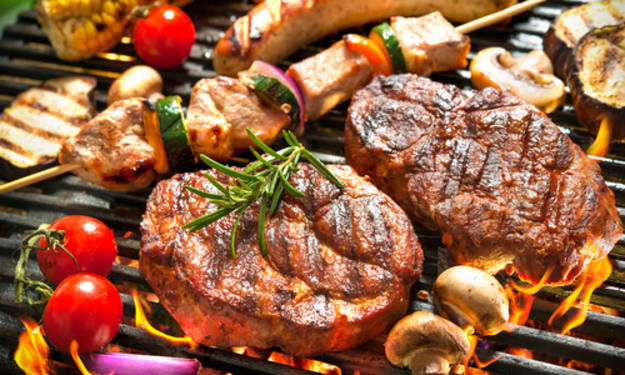The Art and Secrets of Chocolate
A Delectable Journey into the World of Diverse Chocolates

The article starts with a brief history of chocolate
. Dating back about 4000 years, the origins of chocolate can be traced to the cacao plant, initially found in Mesoamerica. Chocolate then made its way to Spain and later to Europe, before making its way back to America and the rest of the world. Over time, the taste of chocolate has evolved significantly from its initial form. Initially used for medicinal purposes, chocolate has undergone a dramatic transformation to become the treat we know today. The true history of chocolate begins in Mesoamerica,
where from 1900 BC to 1500 BC, it was a key ingredient in beverages.
The seeds of the cacao plant were considered a gift from the god Quetzalcoatl by the Mexica people. The bitter chocolate was first consumed as a drink, often mixed with spices or corn paste, and was believed to have romantic and invigorating effects. This ancient beverage is still made in certain regions today. In the 16th century, chocolate became sweetened with the addition of sugar, initially enjoyed by the wealthy but eventually becoming accessible to all. In the modern era, businesses use custom gift boxes to attract customers and increase chocolate sales. During the 20th century, chocolate gained importance as a ration for United States soldiers during wars.
The origin of chocolate can be traced to cacao trees in Central and South America. The exact origins of cacao and its inventor remain unclear, but evidence from ancient Olmec pots suggests the use of theobromine, a stimulating component found in chocolate and tea, dating back to around 1500 B.C.
Mayan Chocolate The Olmecs likely passed down their cacao knowledge to the Maya people of Central America. The Maya not only enjoyed chocolate, but also held it in high regard.
Their writings mention using chocolate drinks during celebrations and for sealing important deals and ceremonies. Although chocolate held significant cultural value for the Maya, it was not exclusive to the wealthy and powerful; nearly everyone had access to it. In many Maya households, chocolate was a staple at every meal. Mayan chocolate was thick and frothy, often combined with chili peppers, honey, or water. Spanish Hot Chocolate There are different accounts of how chocolate made its way to Europe, but it is widely agreed that it first arrived in Spain.
One narrative suggests that Christopher Columbus discovered cacao beans on a trade ship during his voyage to America in 1502 and brought them back to Spain. Another story involves Hernan Cortes, a Spanish conqueror, who supposedly learned about chocolate from the Aztecs in Montezuma's court. Upon his return to Spain, he brought back cacao beans and kept his chocolate discovery a secret.
Yet another account proposes that in 1544, friars who encountered Guatemalan Mayans gifted cacao beans to Philip II of Spain. Regardless of its origins, by the late 1500s, chocolate had become a beloved indulgence at the Spanish court. Spain began importing chocolate in 1585. During their visits to Central America, Italy and France also learned about cacao and brought chocolate back to their countries. Europe quickly developed a fondness for chocolate.
To meet the demand, chocolate plantations emerged, often using enslaved workers. However, Europeans desired more than the traditional Aztec chocolate and created their own hot chocolate recipes with sugar, cinnamon, and other flavors. Soon, luxurious chocolate houses appeared in cities such as London and Amsterdam, where the affluent could savor this delightful treat. Chocolate in the American Colonies Chocolate arrived in Florida aboard a Spanish ship in 1641. The first American chocolate house is believed to have been established in Boston in 1682. By 1773, cocoa beans were a significant import for American colonies, and chocolate was enjoyed by people of all classes.
During the Revolutionary War, soldiers received chocolate as part of their rations, and sometimes in place of payment. (Even during World War II, soldiers were provided with chocolate as part of their rations.) The First Chocolate Bar The modern chocolate bar was not invented until 1876. Henri Nestlé developed the idea and process to mix milk, introducing milk chocolate to the mass market. These new methods and tools allowed for precise mixing of chocolate to create various tastes, flavors, and textures. This led to the creation of the first "eating chocolate," also known as the chocolate bar. Following this development, a variety of chocolate options emerged. The ability to shape "eating chocolate" allowed for more creative uses and the molded chocolate forms we are familiar with today. Fair-Trade Chocolate Present-day chocolate production presents its challenges. Many cocoa farmers struggle to earn a sufficient income, leading some to hire workers for low wages or even engage in exploitative labor practices, including child trafficking, to stay competitive. To make room for cocoa farms, many businesses are clearing rainforests, particularly in West Africa. This has prompted local movements to urge major chocolate companies to reconsider their cocoa sourcing and its environmental impact. There is also a growing demand for more fair-trade chocolate, which is produced in a manner that is fairer and more environmentally friendly.






Comments
There are no comments for this story
Be the first to respond and start the conversation.